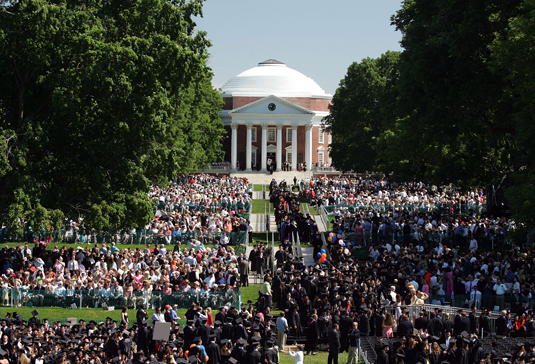In a 1987 New York Times op-ed, William J. Bennett, then secretary of education, wrote that federal subsidies to higher education such as student loans had not reduced its cost.
"If anything," he wrote, "increases in financial aid in recent years have enabled colleges and universities blithely to raise their tuitions, confident that Federal loan subsidies would help cushion the increase."
After 26 years, reality has caught up with Bennett’s thesis. So his new book, co-authored with David Wilezol, asks the question: Is College Worth It?
The financial crisis and its aftermath have exposed the truth about modern higher education despite decades of airy pieties. Bennett and Wilezol relay the staggering data on student loan debt (the average grad now leaves college owing $23,300); and post-graduate employment prospects (in 2011, 54 percent of recent graduates were unemployed).
They also identify the root culprit: "…the commonly held belief that ‘everyone should go to college." It is a belief encouraged, of course, by boundless federal loans and opportunistic politicians.
Those who argue that everyone should attend college point to aggregate data showing how having a bachelor’s degree correlates with economic success. But this ignores the very real and moving stories of individuals whose college dreams turn into nightmares. Even the most fervent advocate for further subsidies to higher education must have qualms when they hear the story of Carol Todd, who landed herself $336,361 in debt after a 26-year education binge.
Some of the solutions the authors propose include: ensuring that students know more about the loans they sign up for and encouraging co-signing; means-testing loans to direct them to genuine need and to necessary student expenditures; increasing transparency and accountability at colleges and universities (especially in light of absurd compensation for faculty and administration, college presidents in particular); forcing faculty to teach more (and forcing students to learn more); ending the "arms race" for better facilities; and embracing online education. All of these make sense. One hopes education policymakers are paying attention.
The book is not without flaws. The anecdotal argument employed throughout opens the authors to accusations of cherry-picking. Also, the authors’ search for solutions brings them occasionally to reference drastic actions, such as China’s completely cancelling majors "in which the employment rate for graduates falls below 60 percent for two consecutive years," while only half-heartedly endorsing them. That leaves the reader wondering what exactly the authors would prefer instead.
The dual authorship of the book presents problems as well. Bennett frequently uses parenthetical interjections to ensure the reader that he is talking, but elsewhere the authors use "we." The effect is schizophrenic.
And though the authors include a chapter called "The Lower Side of Higher Ed," in which they detail both the declining academic and moral standards of colleges and universities and identify the main cause—the "political and cultural liberalism" that "came to dominate the American university in the 1970s"—most of their reforms would not address this significant problem.
Still, Bennett and Wilezol’s book could have two immensely positive effects. It could help counteract the mindless "college for all" crusade of the past few decades; and it could lead to more honest assessments about college’s worth among both parents and their college-age children. The authors never recommend that nobody should go to college. Rather, they simply ask for more sober, practical, and personalized analyses of its worth.
So do a favor for someone you know who’s thinking about college: give this book instead of that perennial ego-stroking bestseller, Oh, the Places You’ll Go!
Is College Worth It? helps the would-be undergrad to determine whether college is the right choice, where to go if it is, and what to do if it is not. And that's certainly better for everyone in the long run.
